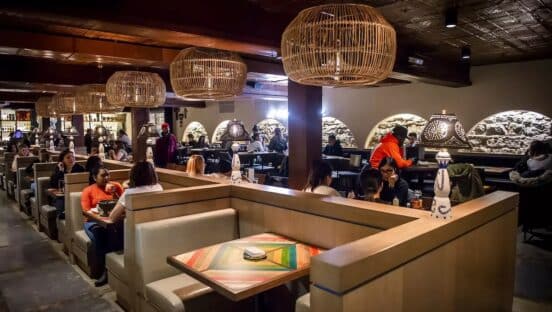A whopping 73 percent of consumers say they will abandon a brand they once felt loyal to after a single bad experience—nearly double the amount saying the same in 2021, states a Retail Customer Experience report.
And as inflation continues to pressure people’s wallets—and the cost of eating out significantly outpaces grocery store prices (jumping 5.3 percent vs. 1.7 percent)—consumers are more discerning than ever about where they spend their dining dollars.
In the ultra-competitive restaurant industry, maintaining restaurant brand standards is vital to creating dining experiences that increase customer loyalty and revenue. But without strong controls, it’s easy for brand standards to slip—especially as restaurants confront industry-wide staffing shortages.
Here’s the pain: The traditional in-person model for brand compliance makes it too expensive and logistically impossible for your teams to physically set foot at every store more than once or twice per year. And that’s if they can get there at all.
Fortunately, like any legacy process, modernization offers a better solution for ensuring ideal brand experiences, food safety, and product quality no matter where your customers go. Merging the power of digital innovation with the advantages of nearshore outsourcing, the rise of virtual audit and brand protection services is solving the critical challenge of how to visit your restaurants more often, at scale, and at a significantly lower cost.
What defines an effective restaurant brand audit?
Brands that excel at customer experience generate 190 percent higher three-year revenue growth than their peers, states a Boston Consulting Group report. But what exactly is needed to ensure every store operates at the level of excellence today’s customers demand?
- Consistency & completeness. Too often, restaurant brands audit different criteria in different regions, failing to identify trends and create a comprehensive picture of their stores. Consistent measurement is fundamental to effective brand audits, repeating the same assessment at every location to generate usable data across critical categories that define an ideal customer experience. That includes store exterior, dining area, marketing, product quality, kitchen, food safety, and crew members.
- Frequent store visits. Without frequent store touches, it’s easy for busy staff to let brand standards slide, scrambling to readjust when annual audits approach. Visiting your stores at least once per quarter creates a natural cadence that keeps standards consistently high.
- Relevant data & actionable insights. Once audits are completed, targeted coaching combined with detailed remediation reports closes performance gaps. Advanced analytics and easy-to-understand dashboards with drill-down capabilities also provide quick, insightful analysis to regional and corporate leadership, ensuring the right actions are taken. Analytics can further boost brand quality and sales: for example, measuring audit results to identify key areas of improvement by market or gauging correlations between improved audit scores and sales data.
Virtual vs. traditional restaurant audits: What’s the right approach for your brand?
Imagine the owner of a single restaurant. How frequently would that person want to visit his or her store to keep customers raving – ensuring the right tools and systems stay in place, the operations manual is followed correctly, and staff perform their jobs to the highest standards?
Now, how can operators at the helm of multi-location chains achieve that same control?
- Traditional third-party providers. Audits are performed onsite by third-party professionals who aren’t dedicated to your brand. While in-person audits may be the most thorough, travel time and expense necessitate infrequent visits that often allow brand standards to slip. This model is also difficult to customize, as regionally based teams must audit multiple brands for a viable business model.
- Internal staff. Audits are performed onsite by district or operational staff. While internal teams are well-versed in brand standards, time lost traveling to scattered stores and assessing the nuts and bolts of operations diminishes their role – distracting them from higher-value work like solving issues proactively. Internal teams typically cover large territories, equating to high travel expenses. Most brands also find this model isn’t viable for international stores.
- Virtual audit teams. Dedicated teams trained to your brand standards leverage advanced technology to conduct virtual walk-throughs of store operations to evaluate branding, food handling and preparation, cleanliness, speed of service, and other essential areas. Brands can choose any store audit frequency they desire to achieve the best results, visiting multiple locations daily. Leveraging nearshore outsourcing in Latin America delivers top-tier talent while eliminating travel expenses and high U.S. labor costs associated with in-person models. Brand audits can be customized to meet the needs of specific brands, restaurant models, and the overall restaurant industry.
Don’t let cost and geography dictate how often you visit your stores
Fast-changing consumer behavior, low margins, and intense competition demand a new level of excellence and value across the restaurant industry. Cost and geography should not prevent brands from visiting their stores as often as they need to deliver consistency and quality across the board.
Virtual audit and brand protection services help restaurant brands pivot toward a more effective approach—paving the way for the kind of elevated customer experiences that lead to higher profitability.
Keith Sayewitz leads Restaurant Services for Auxis, offering unique, industry-specific solutions for Brand Protection, Integrated Franchisee and Customer Care, and IT and POS support, as well as traditional BPO, ITO, and Digital Transformation solutions. Click here to learn more about why leading restaurant brands rely on Auxis’ unprecedented virtual Audit & Brand Protection Services.














